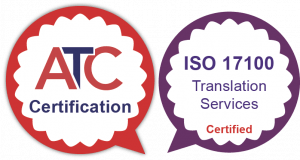How do you carry out translations of assessments for children and for people whose knowledge of English may be limited?
This was a question that was posed to us at a SIOP conference.
When doing translations, it is very important to have a discussion with the client about the target audience for their assessments, tests or certifications. We need a detailed brief on who will be using each part of the assessment (e.g. questionnaire for observers, administrator’s manual etc.).
In order to ensure that the right level of vocabulary is used, we need to have the following information:
- Reading level
- Education level
- Who will be using each document
- Level of formality

It is certainly possible to pitch the translation at the right level as long as we have the information above. Many of our clients will tell us the grade reading level or the educational level of the people who will be taking the test.
As an example, we have carried out translations and adaptations of tests in the area of emotional disturbance and also behaviour in children.
It is very important to choose the right vocabulary for the target age group so that they can properly understand the questions being asked and therefore be properly assessed. All accompanying materials, be they for administrators, parents or observers, can then be pitched at a different level.
It’s key to specify the level of formality with which to address the reader
In addition, you need to know the correct level of formality in languages such as German or Japanese. It would usually sound odd in a German business environment to address someone at a more senior level by their first name. The use of the formal “Sie” (meaning “you”) is the acceptable way of addressing someone in a business environment and it is also used for strangers and older people.
In Japan, their language has various levels to express politeness and formality and it is important to get this right, in order to show respect.
There are three main politeness levels in spoken Japanese: the plain form, the simple polite form and the advanced polite form. The right level to use will be determined by things such as the job that someone does, their age or their experience. A person in a lower position will be expected to use a polite form of speech and the person they are addressing may use a more plain form.
Likewise, in Spanish, the country which you are targeting may have different ways of addressing people: in Spain, younger people would call each other “tu”, whereas in Uruguay and Argentina, for example, they would speak differently and call each other “vos”. So, it is not just the level of formality, but the locale which can make a difference to how something is translated too!
We are happy to discuss your individual requirements with you to ensure that your translations are pitched at the right level for the target audience.




